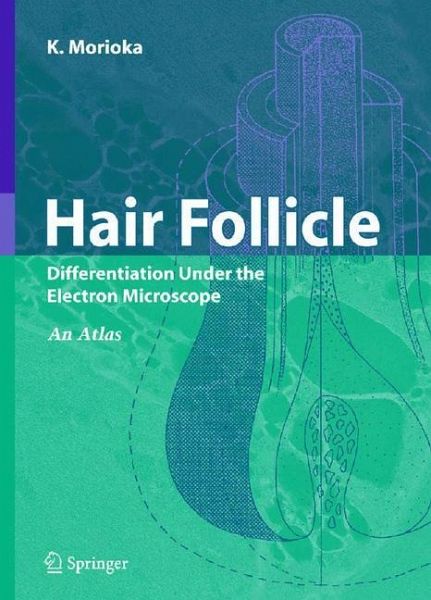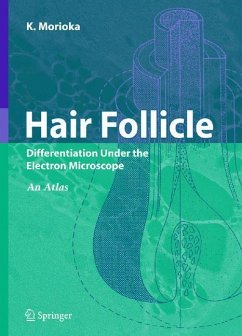
Hair Follicle
Differentiation under the Electron Microscope - An Atlas
Versandkostenfrei!
Versandfertig in 1-2 Wochen
153,99 €
inkl. MwSt.
Weitere Ausgaben:

PAYBACK Punkte
77 °P sammeln!
The electron microscope has been used in hair research for half a century, but the knowledge gained through this study has become rather fragmented over the years. While the molecular biological study of hair has become an active field, even here, as in more traditional research, an understanding of the morphological aspects is essential because the hair follicle structure is highly complex. The author explicates the structure, development, and differentiation of the hair follicle, using his own original photographs and explanations of current research, including growth factors, differentiation-inducers, cell signaling pathways, and transcription factors. With neonatal rats as subjects, he focuses on the morphological analysis of all basic hair cells - in the shaft, matrix, and papilla - from birth to death. The introductory chapter will benefit novices, with the following sections consisting mainly of explanations of the electron microscopic photographs of hair cells.
Each and every hair is much more than just the visible shaft-there are also associated complex sheath structures of epidermal and dermal origin. In the hair follicle, cells undergo a variety of differentiation processes, mostly depending on their layers and positions therein, and electron microscopy reveals a very complex architecture. The structure of a particular layer, such as Henle's layer of the inner root sheath, is not uniform. Rather, cells drastically change during the course of differentiation. By simply comparing electron micrographs of cells of a layer at different degrees of differentiation, one can hardly recognize them as belonging to the same layer. As readers will see, this book contains many superb electron mic- graphs, from low-magni?cation panoramic views for orientation to hi- power views showing ultrastructural detail. Captions and schematic drawings are also very helpful in "reading" electron micrographs and - derstanding the structural detail. In this way,Dr. Morioka has succeeded in dissecting the complex hair follicle at the ultrastructural level.













